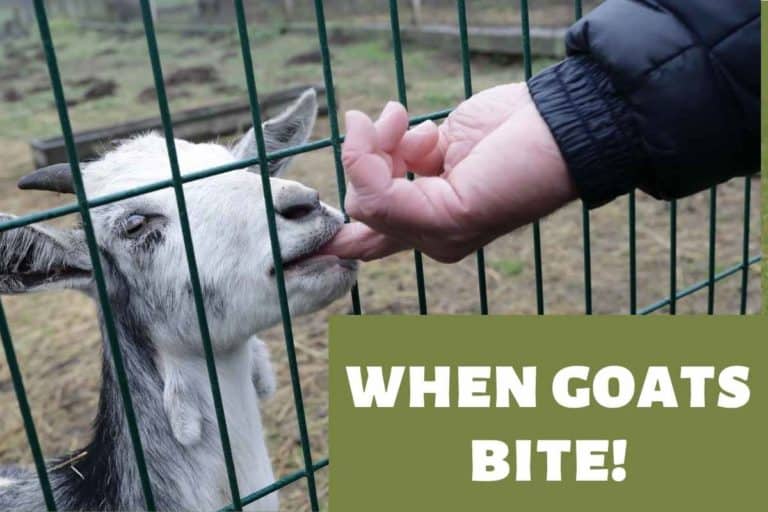Goat Pregnancy: How Long it Lasts and How to Tell If Your Goat is Pregnant
Have you ever wondered about how to tell if a goat is pregnant, normal goat gestation lengths, and the like? These are all important questions to consider if you are a goat keeper. However, understandably, there’s a lot to think about here – which can leave you asking, how long are goats pregnant, and what are the chances my nanny or doe is pregnant? Well, don’t worry – we’ve outlined some of the key things you need to know about goat pregnancy, including goat gestation length and more.
What is a Standard Goat Gestation Length?
The standard goat gestation length is usually around 5 months – 150 days, to be precise. However, we often consider that a goat will be “full term” anywhere between 145 and 155 days post-service (mating). If your goat kids before or after this bracket, her kids may be considered premature or overdue.
What Factors Can Influence How Long are Goats Pregnant?
There are numerous factors that influence how long your goat is pregnant. One of the main factors, in my personal experience, is the size or number of kids she is having; I find that twins and triplets are much more likely to be born around day 145 to 150, while singles or small twins might be born at around 150 to 155 days. That’s only an estimate, though – it’s never an exact art!
However, many other factors can also influence when your goat kids, such as the mother’s condition; an overly fat or overly skinny goat may kid at either end of the extreme. Alternatively, these goats may struggle to go full-term at all, which could result in the kids being born early. Other factors that may cause premature births in kids include the doe being unwell or the kids dying in-utero, to name a couple of potential causes. Sometimes, inadequate nutrition in early pregnancy may also result in your goat not going full-term and reabsorbing the early fetuses.
What is the Term Used for a Pregnant Goat?
A pregnant goat is usually referred to as being “in kid.” As such, when a goat goes into labor, it is often said that your goat is kidding. So, before your goat goes in kid for the first time, she will usually be very young.
A first-time mother goat who has never kidded before is often called a “first freshener” or simply a “first timer.” After this point, a myriad of terms may be used, sometimes even just being referred to as “mature” or “experienced.”
How to Tell if a Goat is Pregnant?
There may be numerous signs that your goat is pregnant, and not every goat will show the same signs. However, we should point out first that a “baby bump” in goats is substantially different to that of a person!
An experienced goat keeper may be able to identify a baby bump in a nanny or doe from around three or four months; usually, this is easiest to see as a lower-than-normal belly. However, your goat may not really “look” pregnant until around four months, and some goats hide their pregnancy bellies so well you wouldn’t know at all. Meanwhile, on the opposite end of the spectrum, some goats will have incredibly large bellies that look like they should be hiding some little ones in there – even when they’re not in kid at all. This is often the result of previous pregnancies and stretched stomach muscles.
The main sign that your goat is pregnant will usually be that she develops an udder. You should most commonly be able to feel (or potentially see) a small udder by around four weeks before she kids. Some nannies or does may develop the beginnings of an udder as soon as six or seven weeks or so before kidding, though (especially if they go overdue). As such, we’d recommend you keep an eye on breeding dates to create an accurate due date rather than relying solely on udder formation.
You may also notice that some nannies change their temperament when pregnant. A prime example of this is one of our old 75% Boer, 25% Golden Guernsey does, who we had from around a year old. She had never been friendly, and we always knew her as Scaredycat. However, when she got closer to her first kidding, she suddenly became friendly – and with each subsequent kidding, the temperament change from skittish to cuddly became more and more pronounced! Of course, this isn’t a telltale sign of pregnancy alone, but it may be worth keeping in mind along with other potential signs.
What are Common Signs that a Goat Is About to Go Into Labor?
If your goat is pregnant, there are numerous signs that she is likely to go into labor. However, it’s important to consider that every nanny/doe is different. As such, while some may spend the entire 24 hours in the run-up to going into active labor moaning and being distressed about the entire affair, others may stay quiet until a few minutes before, then surprise you with a kid or two on the ground half an hour later.
However, some common signs your goat is coming to the end of gestation and is about to kid imminently include:
- The pin bones above her tail may soften, often to the point you can touch your fingers on either side of her pin bones
- Her udder may become firm and hard – some even to the point of feeling rock solid!
- She may begin separating herself from the rest of her herd
- Some may begin pawing at the ground in discomfort or exhibiting “nesting” behaviors
- Depending on the doe, some may raise their ears as if “listening” to their stomach
Final Thoughts
If you have been looking to find out more about goat pregnancy, we hope that today’s guide may have given you an insight into the exciting world of breeding goats. It’s worth considering here, however, that not all goats should necessarily be bred. Some goats may not be able to withstand the rigors of pregnancy and lactation, some goats may be poor mothers, and some goats may have genetic faults that they could pass on to their kids. Moreover, if your goat has previously had cesarean sections, a broken pelvis, or the like, it may be more likely to struggle with the labor and kidding process, which could jeopardize its health and welfare.



